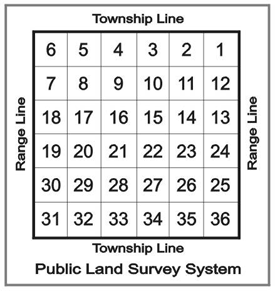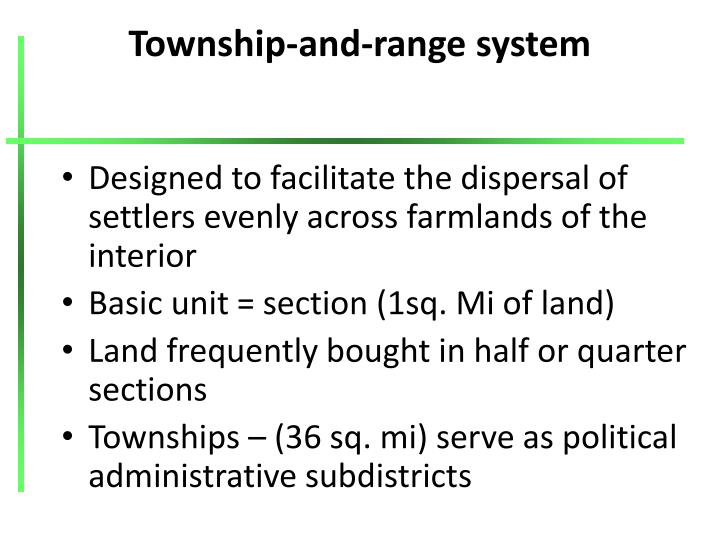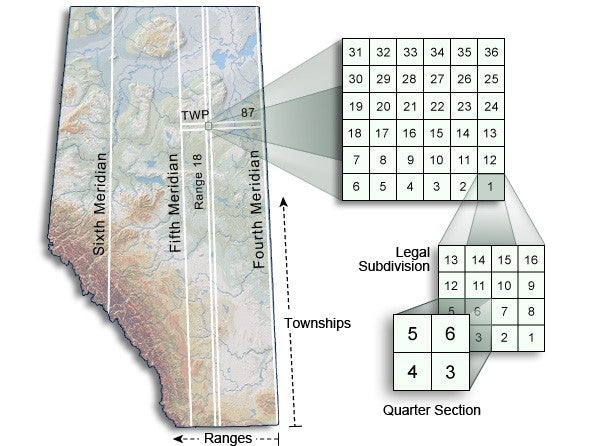

The legal description (and in some cases, the municipal plat maps it references) allow us to determine the size, shape, boundaries, and location of a parcel. It's more authoritative than the address and the parcel number, and if this information is stated incorrectly on a deed, the wrong piece of real estate will be transferred. To put it simply, a property's legal description is the definition of the real estate being bought and sold. Sections could be further subdivided into quarter sections and quarter-quarter sections.One of the most critical (and confusing) pieces of information that goes into a land transaction is the legal description.

Townships were subdivided into 36 one-mile-square sections. See the map below for states that used this system. The system (Public Land Survey System) divided land into 6-mile-square townships, which is the level of information included in the National Atlas. one sees that our farmland and towns have a square pattern.

Township & Range: Flying over the western U.S. From the air it can be seen that land parcels are irregular in size and shape. This one is native to England and can be found in the original thirteen colonies. Metes and Bounds: This system uses physical features of local geography along with directions and distances to define and describe boundaries of land parcels. Most farmland was along rivers and the system created long rectangular plots of farmland to give equal access to the river. Long Lot System: This one was put in by the French and used in French regions of North America such as Canada and Louisiana. The ones you need to know for APHG are on this page. The shapes evident in farmland and villages often have their roots in cadastral systems. Patterns of land use in rural areas can be seen from the air if you are flying in an airplane. Cadastral systems are land use and distrubtion systems.


 0 kommentar(er)
0 kommentar(er)
